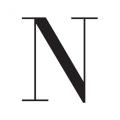
LABELLING on wine is “woefully inadequate” as it does not reveal the high sugar content, according to health experts.
New research by member organisations of the Alcohol Health Alliance (AAH) found just two glasses of wine may contain almost your entire daily recommended sugar limit, and more sugar than a McDonald’s hamburger.
The study analysed 30 bottles of red, white, rose, fruit and sparkling wine from the top 10 leading wine brands in the UK. It found wine can contain anywhere between 0g and 59g of free sugars per bottle.
Only 20% of the wines analysed displayed calorie content on their labels. None of the wines displayed sugar content on their labels, despite this information being required for all non-alcoholic drinks.
READ MORE: Data shows 10 per cent drop in alcohol-related admissions to Scottish hospitals
The AAH said the findings mean drinkers are being kept in the dark about just how much sugar and calories are in the products they buy.
Government guidelines recommend no more than 30g of free sugars per day for an adult – yet it’s possible to reach almost this entire amount of sugar by drinking just two medium-sized glasses of some of the most popular wine on the market.
The analysis found that the products containing the most sugar tended to be the lower-strength wines. The AAH said with no legal requirement to display sugar content on alcohol labels, drinkers opting for a lower-strength alcohol choice – perhaps thinking this is a healthier option – are unwittingly upping their daily sugar intake. This can lead to an increased risk of health conditions such as type-2 diabetes and tooth decay.
The five wines with the highest sugar content per 175ml glass were: Barefoot Bubbly Pink Moscato at 13.8g, Barefoot Pink Moscato with 11.1g, Echo Falls Fruit Fusion Summer Berries (9%) with 9.2g, Echo Falls Sparkling Summer Berries (8.5g) and Echo Falls Fruit Fusion Summer Berries (5.5%) at 8.2g.
Just two medium-sized glasses of the most calorific wines analysed contained more calories than a McDonald’s hamburger. The five wines with the highest calories per 175ml glass were: Hardy Stamp Shiraz Cabernet at 139.7 calories, Yellow Tail Shiraz (139.3 calories), Barefoot Bubbly Pink Moscato (137.2 calories), Casillero Del Diablo Cabernet Sauvignon (132.3 calories) and Campo Viejo Rioja Tempranillo (132.3 calories).
For those who drink, alcohol accounts for nearly 10% of their daily calorie intake, with around 3.4 million adults consuming an additional day’s worth of calories each week – totalling an additional two months of food each year.
Alison Douglas, chief executive of Alcohol Focus Scotland, said: “Alcohol labelling is woefully inadequate in this country and allows the alcohol industry to decide what information it will and won’t include on its products, despite alcohol claiming the lives of 70 people a day in the UK.
READ MORE: The alcohol culture at Westminster goes deeper than Boris Johnson
“The alcohol industry has dragged their feet for long enough – unless labelling requirements are set out in law, we will continue to be kept in the dark about what is in our drinks. People want and need reliable information directly on bottles and cans, where it can usefully inform their decisions.”
Professor Sir Ian Gilmore, chair of the AAH, said: “Alcohol’s current exemption from food and drink labelling rules is absurd. Shoppers who buy milk or orange juice have sugar content and nutritional information right at their fingertips. But this information is not required when it comes to alcohol – a product not just fuelling obesity but with widespread health harms and linked to seven types of cancer.
“The Government must publish its planned consultation on alcohol labelling without further delay – which we have been waiting for since 2020.”
Holly Gabriel, nutrition manager at Action on Sugar, said: “The huge variation in sugar and calorie content in different wines, coupled with the lack of labelling, are yet more examples of the misleading tactics used by the food and drink industry. Current policy loopholes have meant some wines can be sold with unnecessary amounts of sugar.”



Why are you making commenting on The National only available to subscribers?
We know there are thousands of National readers who want to debate, argue and go back and forth in the comments section of our stories. We’ve got the most informed readers in Scotland, asking each other the big questions about the future of our country.
Unfortunately, though, these important debates are being spoiled by a vocal minority of trolls who aren’t really interested in the issues, try to derail the conversations, register under fake names, and post vile abuse.
So that’s why we’ve decided to make the ability to comment only available to our paying subscribers. That way, all the trolls who post abuse on our website will have to pay if they want to join the debate – and risk a permanent ban from the account that they subscribe with.
The conversation will go back to what it should be about – people who care passionately about the issues, but disagree constructively on what we should do about them. Let’s get that debate started!
Callum Baird, Editor of The National
Comments: Our rules
We want our comments to be a lively and valuable part of our community - a place where readers can debate and engage with the most important local issues. The ability to comment on our stories is a privilege, not a right, however, and that privilege may be withdrawn if it is abused or misused.
Please report any comments that break our rules.
Read the rules hereLast Updated:
Report this comment Cancel